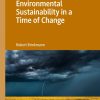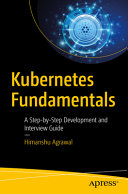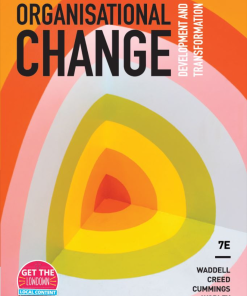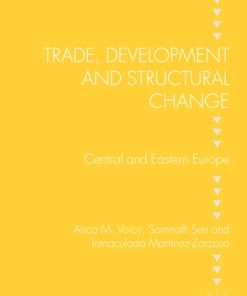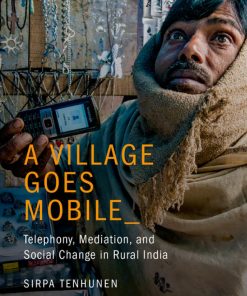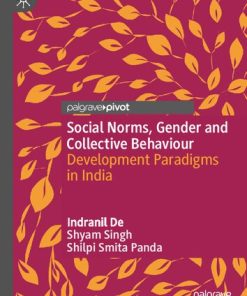How Lives Change Palanpur India and Development Economics 1st edition by Himanshu, Peter Lanjouw, Nicholas Stern 0192529077 9780192529077
$50.00 Original price was: $50.00.$25.00Current price is: $25.00.
How Lives Change: Palanpur, India, and Development Economics 1st edition by Himanshu, Peter Lanjouw, Nicholas Stern – Ebook PDF Instant Download/DeliveryISBN: 0192529077, 9780192529077
Full download How Lives Change: Palanpur, India, and Development Economics 1st edition after payment.
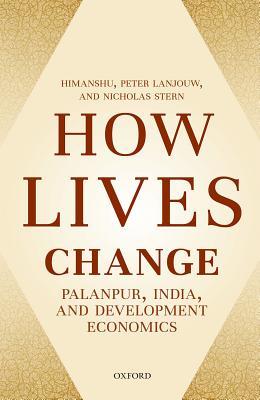
Product details:
ISBN-10 : 0192529077
ISBN-13 : 9780192529077
Author: Himanshu, Peter Lanjouw, Nicholas Stern
Development economics is about understanding how and why lives change. How Lives Change: Palanpur, India, and Development Economics studies a single village in a crucially important country to illuminate the drivers of these changes, why some people do better or worse than others, and what influences mobility and inequality. How Lives Change draws on seven decades of detailed data collection by a team of dedicated development economists to describe the evolution of Palanpur’s economy, its society, and its politics. The emerging story of integration of the village economy with the outside world is placed against the backdrop of a rapidly transforming India and, in turn, helps to understand the transformation. It puts development economics into practice to assess its performance and potential in a unique and powerful way to show how the development of one village since India’s independence can be set in the context of the entire country’s story. How Lives Change sets out the role of, and scope for, public policy in shaping the lives of individuals. It describes how changes in Palanpur’s economy since the late 1950s were initially driven by the advance of agriculture through land reforms, the expansion of irrigation and the introduction of “green revolution” technologies. Since the mid-1980s, newly emerging off-farm opportunities in nearby towns and outside agriculture became the key driver of growth and change, profoundly influencing poverty, income mobility, and inequality in Palanpur. Village institutions are shown to have evolved in subtle but clear ways over time, both shaping and being shaped by economic change. Individual entrepreneurship and initiative is found to play a critical role in driving and responding to the forces of change; and yet, against a backdrop of real economic growth and structural transformation, this book shows that human development outcomes have shown only weak progress and remain stubbornly resistant to change.
How Lives Change: Palanpur, India, and Development Economics 1st edition Table of contents:
Introduction
I.1 The Purpose of Research in Development
I.2 Palanpur and India
I.3 The Choice of Village and Earlier Work
I.4 Some Key Findings on Change over Time
I.5 Reaction of Villagers
I.6 Structure of the Book
I.7 Acknowledgements
Part 1. Foundations
1. The Study of Villages and the Understanding of Development: Building the Evidence*
1.1 Introduction: The Role and History of Village Studies
1.2 Longitudinal Surveys
1.3 Palanpur Surveys
1.4 2008/10 Survey
1.5 Quality Matters: Lessons for Data Assessment and Design
1.6 Capturing Change and Designing for Change
2. Palanpur: The Village through Seven Decades
2.1 Introduction
2.2 A Brief Description of the Village
2.3 Population, Caste, and Family Structure
2.4 Land, Assets, and Income
2.5 Human Development and Public Services
2.6 Society, Politics, and Institutions
2.7 Concluding Remarks
3. India and Palanpur: A Story of Change
3.1 Introduction
3.2 Structural Transformation in India
3.3 Mobility and Inequality
3.4 Informality, Formality, and Endogeneity of Institutions and Markets
3.5 Human Development: Education and Health
3.6 Entrepreneurship, Innovation, and Investment
3.7 Concluding Comments: India, Palanpur, and the Five Basic Themes
4. Theory and India
4.1 Introduction
4.2 Growth and Distribution
4.3 Mobility and Inequality
4.4 Institutions, Society, and Behaviour
4.5 Human Development, Capability, and Empowerment
4.6 Entrepreneurship, Innovation, and Investment
4.7 Concluding Comments
Part 2. Economy
5. Changing Activities, Changing Markets: Agriculture
5.1 Introduction
5.2 Data and Methodology
5.3 Basic Features of Agriculture in Palanpur
5.4 Costs, Income, and Profits
5.5 Conclusions: Agriculture in the Changing Palanpur Economy
6. Tenancy in Palanpur
6.1 Introduction
6.2 Tenancy in Palanpur over the Years
6.3 Land Ownership, Caste, and Choice of Contract
6.4 Perceptions of Landlords and Tenants: Discussion Questionnaires
6.5 Sharecropping, Efficiency, and Institutional Dynamism
6.6 Conclusion
7. Changing Activities, Changing Markets: Beyond Agriculture
7.1 Introduction
7.2 Data on Rural Non-Farm Activities
7.3 Outside Jobs and Occupational Change in Palanpur
7.4 Farm and Non-Farm Wages in Palanpur
7.5 Some Examples of Casual Non-Farm Employment in Palanpur
7.6 Occupational Diversification, Entrepreneurship, and Household Characteristics
7.7 Women’s Participation in the Non-Farm Sector
7.8 Migration, Commuting, and Links with the Outside World
7.9 Comparison with Other Village Studies
7.10 Conclusion
Appendix: Note on Income Data in Palanpur
8. Poverty, Inequality, and Mobility in Palanpur
8.1 Introduction
8.2 Poverty Dimensions and Trends
8.3 Income Inequality
8.4 Economic Mobility
8.5 Household and Social Structure in the Face of Change and Shocks
8.6 Conclusion
Part 3. Society
9. Human Development: Education, Health, Public Services
9.1 Introduction
9.2 Literacy and Education
9.3 Health and Population
9.4 Nutrition
9.5 Conclusion
10. Women: Possibilities and Constraints
10.1 Women in a Changing Village
10.2 Data
10.3 Fertility
10.4 Education: Literacy and Schooling
10.5 Women’s Employment Participation in Palanpur
10.6 Autonomy, Decision-Making, Mobility, and Exposure to Media
10.7 Conclusion
11. Society and Politics: Inertia and Change
11.1 Introduction
11.2 Caste and Occupation
11.3 The Village as a Residential Unit
11.4 Changing Social Relations: Caste
11.5 Changing Social Relations: Religion
11.6 Democratization and Participation
11.7 Collective Action and Public Services
11.8 Conclusion
Part 4. Reflections
12. Future Prospects
12.1 Looking Back and Looking Forward
12.2 Past Attempts at Forward Predictions
12.3 External Forces and Internal Forces
12.4 Mobility and Inequality
12.5 The Future of Palanpur’s Institutions
12.6 Human Development
12.7 Entrepreneurship
12.8 Conclusion: Optimism and Anxieties
13. Lessons for India, Policy, and the Economics of Development
13.1 Introduction
13.2 India
13.3 Policy
13.4 The Economics of Development
13.5 Future Research on Palanpur and Elsewhere
13.6 Concluding Comments
People also search for How Lives Change: Palanpur, India, and Development Economics 1st edition:
how did women’s lives change in the 1920s
how technology changed our lives essay
how internet changed our lives essay
how has electricity changed our lives
how is ai going to change our lives
Tags: How Lives Change, Palanpur, India, Development Economics, Himanshu, Peter Lanjouw, Nicholas Stern
You may also like…
Politics & Philosophy - Social Sciences
Violent Modernities: Cultural Lives of Law in the New India Oishik Sircar
Computers - Applications & Software
Computers - Networking
Kubernetes Fundamentals: A Step-by-Step Development and Interview Guide 1st Edition Himanshu Agrawal
Business & Economics - Management & Leadership
Organisational Change Development and Transformation 7th Edition Dianne M. Waddell
Politics & Philosophy
Trade, Development and Structural Change 1st ed. Edition Anca M. Voicu
Biology and other natural sciences
Politics & Philosophy
A Village Goes Mobile: Telephony, Mediation, and Social Change in Rural India Sirpa Tenhunen
Business & Economics
Politics & Philosophy
Social Norms, Gender and Collective Behaviour: Development Paradigms in India Indranil De



